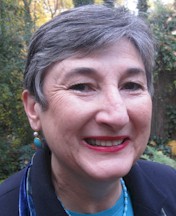|
|
|||||
|
Be Neutral |
|||||
|
There was the old joke that people signing up for mediation training thought they were there to learn how to meditate. Now that doesn’t seem so funny, because in many ways it has proven to be true. Mindful mediators sit quiet and receptive in mediation much as mediators sit quiet and receptive in meditation. Law schools are now teaching meditation to help law students manage stress and stay centered during the demands of school, jobs and their personal lives. Meditation training can create the same centering benefits for mediators. Ideally, in mediation a mediator moves from a doing mind into a being mind that models for the parties calmness and smooth energy. Once the business of the opening statements and information gathering are done, the mediator shifts into a different mindset and posture. The mediator is setting the tone and the standard of the mediation simply through his or her presence. Calm helps to create calm. Studies of “mirror neurons” show that people learn by watching, and we are hard wired for imitation. Mirror neurons, researchers have found, begin working at birth. They are triggered when a child observes an action and then practices performing it. Mediators can make mirror neurons work in mediation as well. Rather than being emotionally infected by the parties’ conflict, the mediator can consciously infect the parties with calm thoughtfulness and reason. The parties mirror back to the mediator the energy and tone that the mediator sends out. Meditation can be learned and can come easier with practice. Scientific studies have proven that when the brain is constantly disciplined, as through meditation, it grows thicker in places, like muscles that grow with use. When training new mediators, I always see them working too hard. They forget that it is the parties who are in charge of solving the problem. We mediators set the stage, redirect the flow of the conversation, reframe, tell stories, all to get the parties to move into the mindset that they can have control and work cooperatively and collaboratively. Sometimes it works; sometimes the parties aren’t ready to go there yet. We do our work and let it go. Once the parties are able to start talking with each other and work together, mediators become the breathing mountain, aware of our own breath, reactions, and thoughts, observant and non-judging. We only intervene when absolutely necessary. We are in total control, but not controlling. We are of the mediation, but not in it. We totally accept that the parties think and feel as they do and give them the space to work through those thoughts and feelings until they come out on the other side. When they are able to hear and understand each other, they can begin to move to each other’s side. When the resolution is reached the parties can say, “Look, we did it all by ourselves.” *Tao te Ching As mediators, by practicing mindfulness, being aware of our own reactions and feelings and letting them go, we become more centered. It is easier for us then to stay in the middle and not take sides, and we become examples of calm caring to the parties who are working out their plans for the future. This article is based on a seminar on “Mediator Mindfulness: Findings from Practice, Research and Science,” sponsored by the Georgia Mediator’s Association on September 30, 2011. Presenters were Chris Carlsten, M.A.; Raye Rawls, J.D.; David Block, M.D., Ph.D.; and Bob Berlin, J.D – all registered mediators!
|
|||||

